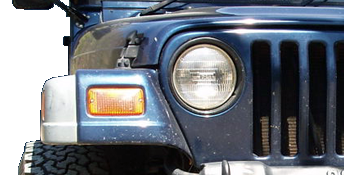Can you not tune that out on the computer? Or figure out some way to make the computer not see the load? It seems like it would be easier to make it idle more steady/consistently than going to a higher stall.
Seems like a high stall would cause more heat, and then once it really grabbed you’d go from nothin, nothin, bam you’re blowing the tires off. I’ve only dealt with higher stall converters in LS powered hot rods so I don’t know a great deal about gen.
I can't really speak for the tuning aspect, since I'm just getting started with learning it...I'm assuming that the engine is sensing the load via manifold vacuum, and it probably adjusts the IAC to compensate.
The higher stall "can" create more heat, but doesn't always. Of course, it can be well compensated with a good cooler system and obviously a trans temp gauge for monitoring. I'm sure those are things already installed on his rig.
But what you've described is a huge misconception of high stall converters. There are many that think they only engage or "grip" at their advertised stall, which is never the case. I've currently got what presumably was a 4000 RPM stall converter in my TH350, because I ran it behind a healthy 383. I'd bet my 401k that it won't stall that high with my current engine, as the torque peak is lower in the RPM range, my gears are different, and the weight is much less than it was previously. But what I will contribute to your comment is that it under no circumstances would only grab at 4000 RPM...I could put it in gear and idle around under no throttle. It would drive right up onto my trailer with little effort. Sadly, that is the only incline I've ever tried to climb (so far...

), but it will work fine below that range. Basically what the advertised stall means is that it is a range in which the converter will "flash" to, or "foot brake" to, given a particular torque input from the engine (along with weight, tire size, gear ratio, etc. etc.)
Example: sitting at a stop, put the transmission in gear, and mat the throttle. You'd see the tach flash up to (or near) the advertised stall as the vehicle launches. Same thing with the advertised "foot brake" stall -- you could step on the brakes and the gas, and the tach will go up reasonably near the advertised stall. The "foot brake" stall is typically lower than the flash stall. But the vehicle will still idle and "creep" just fine, nearly the same as it would have with a stock converter...especially with the transfer case engaged in low gear.
But the purpose of a high stall torque converter is to eliminate engine lugging, just as
@moldman05 described his is doing.


 ), but it will work fine below that range. Basically what the advertised stall means is that it is a range in which the converter will "flash" to, or "foot brake" to, given a particular torque input from the engine (along with weight, tire size, gear ratio, etc. etc.)
), but it will work fine below that range. Basically what the advertised stall means is that it is a range in which the converter will "flash" to, or "foot brake" to, given a particular torque input from the engine (along with weight, tire size, gear ratio, etc. etc.)